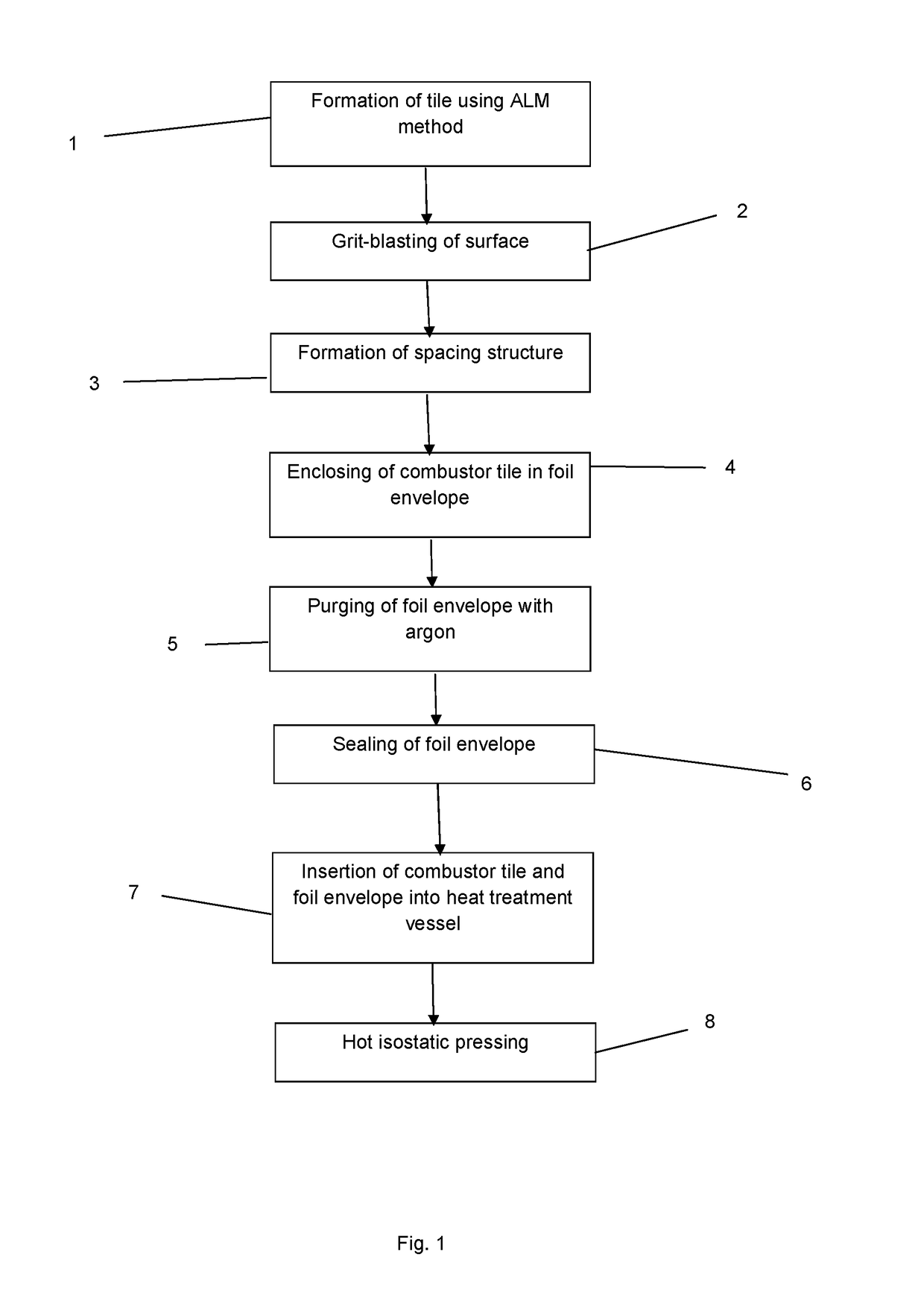Heat treatment method
a heat treatment method and component technology, applied in mechanical equipment, additive manufacturing, turbines, etc., can solve the problems of inability to heat treatment, and inability to meet the requirements of heat treatment, so as to reduce stress assisted oxidation, and reduce the scrap rate of components
- Summary
- Abstract
- Description
- Claims
- Application Information
AI Technical Summary
Benefits of technology
Problems solved by technology
Method used
Image
Examples
Embodiment Construction
[0041]In step 1, a combustor tile is formed of a high gamma prime nickel superalloy CM247LC using an additive layer manufacturing method.
[0042]In step 2, the surface of the combustor file is grit-blasted to remove any surface irregularities.
[0043]In step 3, a spacing structure is formed to surround the combustor tile. The spacing structure comprises a plurality of struts which project from the combustor tile.
[0044]In step 4, the combustor tile is enclosed in a foil envelope formed of 0.05 mm thick 321 stainless steel foil. The foil is wrapped around the spacing structure such that the plurality of struts maintains a small spacing between the foil envelope and the combustor tile i.e. so that the foil envelope does not touch the combustor tile at any point. The foil envelope has an inlet opening at an uppermost edge and an outlet opening at a lowermost edge.
[0045]In step 5, the foil envelope is purged with argon by flowing argon into the inlet opening such that it passes through the f...
PUM
| Property | Measurement | Unit |
|---|---|---|
| isostatic pressure | aaaaa | aaaaa |
| pressures | aaaaa | aaaaa |
| thickness | aaaaa | aaaaa |
Abstract
Description
Claims
Application Information
 Login to View More
Login to View More - R&D
- Intellectual Property
- Life Sciences
- Materials
- Tech Scout
- Unparalleled Data Quality
- Higher Quality Content
- 60% Fewer Hallucinations
Browse by: Latest US Patents, China's latest patents, Technical Efficacy Thesaurus, Application Domain, Technology Topic, Popular Technical Reports.
© 2025 PatSnap. All rights reserved.Legal|Privacy policy|Modern Slavery Act Transparency Statement|Sitemap|About US| Contact US: help@patsnap.com


